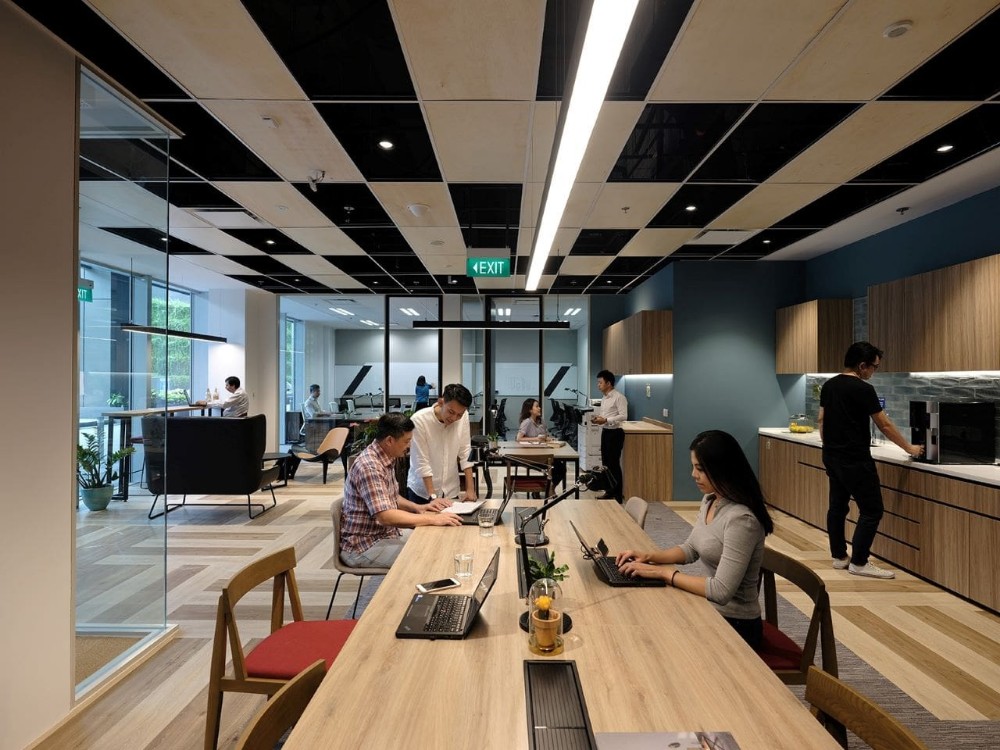From creating new products to solve emerging problems to enhancing operational processes for better efficiency, innovation is a key to an organisation’s success.
To achieve these gains consistently, it’s crucial to cultivate an inventive spirit in your workplace. This goes beyond ad-hoc efforts, requiring the establishment of an innovative culture and mindset throughout the organisation.
This guide explores how you can create a culture of innovation in the workplace to ensure your employees and business outcomes truly flourish.
What is a Culture of Innovation?
A culture of innovation is a dynamic set of shared norms and behaviours where creativity and new ideas are actively encouraged from every level of your organisation. This involves embedding innovative thinking directly into your company's daily practices and overarching policies.
For instance, empowering a customer service team to propose novel solutions for recurring client issues can directly lead to ongoing improvements as they encounter them on the ground.
Such a culture of business innovation helps facilitate continuous advancements, ensuring your business consistently adapts and refines its offerings based on fresh perspectives and actionable insights.
Characteristics of a Thriving Innovation Culture
Strong and Supportive Leadership
Organisations with thriving innovation cultures often feature strong and supportive leadership. This means leaders champion new ideas, demonstrate transparency, and actively empower their teams to experiment.
For instance, key decision-makers may regularly host 'idea forums' and publicly support unconventional projects. These efforts fuel encouragement, inspiring confidence and driving a continuous pursuit of novel solutions throughout the company.
Openness to Failure
A hallmark of a thriving innovation culture is an organisation’s attitude towards failure. Viewing missteps as learning opportunities instead of irredeemable mistakes creates a psychologically safe environment for calculated risks.
For example, a team transparently sharing insights from an unsuccessful project, rather than concealing it, signals a strong commitment to continuous learning and strengthens the innovative spirit.
Emphasis on Diverse Perspectives
A strong culture of innovation thrives on diverse perspectives, actively seeking input from individuals across varied backgrounds, experiences, and departments.
This breadth of thought is crucial because it sparks new connections and unconventional solutions, such as when a tech company’s product development stage considers insights from teams like engineering and marketing.
By preventing siloed thinking, these practices yield unique market-driven designs that can lead to more successful sales outcomes.
Employee Autonomy
Employee autonomy involves giving your team members freedom and ownership in their work. For instance, allowing a developer to choose their preferred coding tools can foster creativity.
With such autonomy, individuals can work in a way that best suits their working styles. Additionally, the flexibility to experiment and develop new approaches without constant micro-management can help accelerate new ideas.
The Strategic Benefits of an Innovation Culture
A Competitive Edge
By fostering an innovative mindset in your organisation, you stand to gain a competitive advantage by attaining the means to anticipate and navigate market disruptions.
For instance, by continuously keeping up with evolving customer demands and coming up with ways to meet them, you can rapidly adapt to market shifts and stay ahead of the curve.
This agility ensures your company can swiftly introduce relevant offerings and pivot strategies. In the long run, you are better positioned to outperform competitors in terms of revenue growth and market share.
Sustainable Growth and Profitability
A vibrant culture of innovation fuels sustainable growth and profitability for your business. It gives you the creativity and imagination to create new offerings and streamline processes to unlock fresh revenue streams.
For example, a software company that continuously develops new modular features based on user feedback can expand its offerings and maintain market appeal.
Such an approach not only diversifies income but also enables you to optimise resources, increase efficiency, and reduce costs in the long term.
Enhanced Employee Engagement and Retention
One of the advantages of building a culture of innovation is that it empowers employees to contribute their ideas to the team, fostering a sense of ownership and purpose. This direct involvement significantly increases their motivation and loyalty, leading to a more productive and engaged workforce.
Furthermore, innovative environments tend to attract and retain top talent who are actively seeking impactful work. Consequently, you stand to secure skilled individuals for sustained growth, maintaining a competitive edge in your industry.
Improved Brand Perception
A strong reputation for innovation significantly elevates your brand’s image among customers and partners. For example, a fintech company consistently launching user-friendly digital solutions quickly becomes synonymous with forward-thinking and reliability.
Such a perception helps you build deeper trust and preference in the market, encouraging new customer acquisition and fostering stronger, long-lasting relationships with collaborators. Ultimately, this positive brand perception can give you a distinct advantage in the market.
Six Strategies for Building a Culture of Innovation
1. Democratise Idea Generation
To create a culture of innovation, empower everyone to contribute ideas, regardless of their role. This encourages all employees to bring their best ideas to the table. Here’s how you can go about it:
- Hold inclusive brainstorming sessions to spark fresh ideas from all corners.
- Utilise digital tools and submission platforms for easy idea submission and feedback.
- Launch internal competitions or hackathons focused on specific problems to generate solutions.
2. Invest in Continuous Learning and Growth
Providing opportunities for all employees to upskill and explore new interests helps to create a culture of innovation in the workplace.
For instance, funding industry workshops on emerging tech can spark novel approaches to your challenges. By investing in your employees’ personal and professional development, you fuel their innovative thinking.
3. Cultivate Diverse Interactions
Collaborations across different teams and departments naturally bring diverse perspectives together. This can give rise to more robust and creative solutions for your organisation. Consider the following approaches:
- Facilitate cross-functional projects: Create project teams with members from varied departments to encourage interdisciplinary problem-solving.
- Host informal networking events: Organise social gatherings or workshops that allow employees from different areas to connect and share ideas casually.
- Strategically design workspaces: Utilise co-sharing office layouts or hot desk spaces to encourage spontaneous interactions and knowledge exchange across teams.
4. Lead by Example and Inspire Purpose
Leaders are pivotal in successfully instilling a culture of innovation in the workplace. Therefore, you should model desired behaviours, demonstrating your personal commitment to innovation and risk-taking. Such visible leadership inspires confidence.
Additionally, align employees towards a strong and clearly communicated purpose to ensure everyone understands their role in the bigger picture.
5. Allocate Resources for Experimentation
Providing the right resources is crucial for building a culture of innovation. Without adequate support for trials and potential failures, even the most brilliant ideas may never see the light of day.
Therefore, dedicate specific time, budget, and tools to exploring new ideas and prototyping. This commitment empowers your team to experiment and bring their ideas to fruition.
6. Recognise and Reward Innovative Contributions
Acknowledging and celebrating both the efforts and outcomes in the innovation process is vital. This recognition motivates employees to continue contributing ideas and taking calculated risks.
For example, you can publicly praise efforts by sharing success stories of innovative projects or problem-solving initiatives across the company. Tangible incentives like bonuses and promotions also help to reward employees for their efforts while reinforcing the culture of innovation at a policy level.
Your Journey to Creating a Culture of Innovation

A team engaged in discussion in a meeting room.
Creating a culture of innovation is an ongoing strategic journey, not a one-off project. Yet, the benefits your company stands to reap from this effort are extensive.
So, embrace these strategies to unlock your team’s full creative potential and set the tone for sustained success.
While you’re at it, don’t forget to ensure your workspace offers the dynamism to complement your efforts. Book a tour at The Work Project to explore our strategic workspace solutions today!






